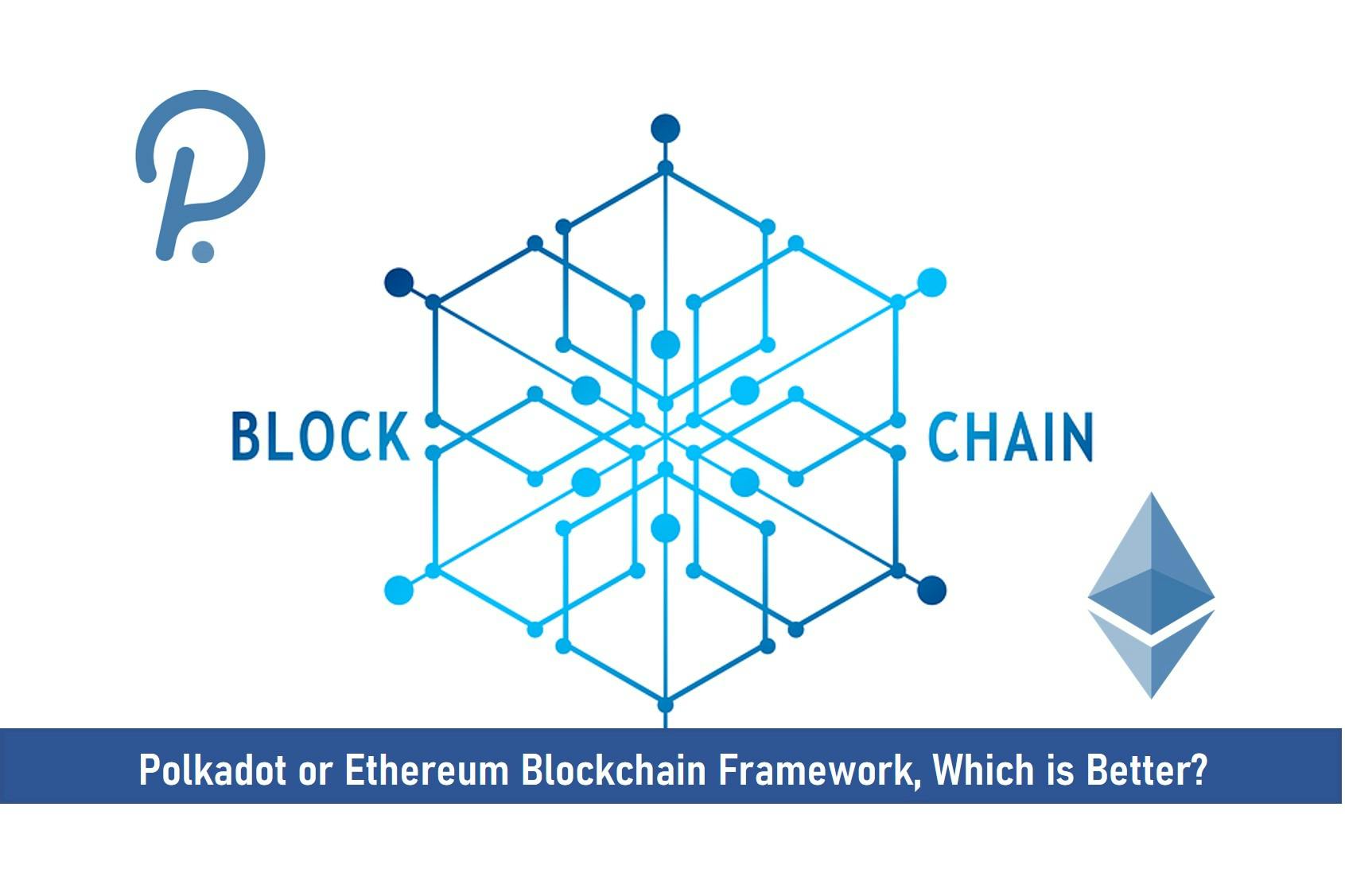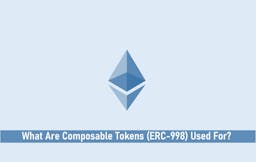
Polkadot or Ethereum Blockchain Framework
Is Polkadot Built on Ethereum?
Polkadot is built on Substrate which is a blockchain building framework. Polkadot is an Ethereum strong competitor and many programmers are now using the Substrate blockchain to build applications on it.
Many programmers consider the blockchain platform safer, efficient, and easier to use. However, both blockchains use smart contracts. The Substrate allows developers to build their blockchain with the possibility of linking blockchains with each other.
Ethereum is however the second-largest cryptocurrency by market cap, and this does not appear to be changing anytime soon, given its significant first-movers advantage over competitors. But, Polkadot still has distinct advantages over Ethereum in terms of usage and scalability.

Key Takeaways
• Polkadot enables communication between platforms and it is highly scalable.
• The goal of Polkadot and Ethereum is the same, to enable the development of decentralization applications on their respective ecosystems.
• Building a robust consensus mechanism and ensuring the network’s security is one of the most difficult bottlenecks when developing a blockchain from the ground up.
• Polkadot can process many transactions on multiple parachains in parallel as it is much more scalable than legacy networks.
Nonetheless, there is constant discussion about ‘Ethereum killers’ and potential ‘Ethereum alternatives’ that could potentially alleviate issues such as scalability and energy usage.
Polkadot is one project that has gained traction, and we will go over all of the important details you need to know in this article.
What is Polkadot?
Polkadot was founded by the Web3 foundation in Switzerland. It is an open-source software like many others and decentralized.
In 2016, Gavin Wood released a white paper outlining Polkadot’s vision and objectives. In this paper, he discussed the possibilities that blockchain technology could unlock, as well as the various barriers to real-world deployment.
Wood is one of Ethereum’s co-founders, and he has recently criticized the project, pointing out its lack of “agency” and the low upper limit for transactions per second. Polkadot is a multi-chain blockchain aiming for scalability and interoperability.
What is the Purpose of Polkadot?
Polkadot’s objectives are fairly clear. It aims to be more scalable than the competition by employing shards known as “parachains” that can process transactions in parallel.
In comparison to Ethereum, this allows for more transactions per second. Polkadot’s scalability is a key feature, and the fact that multiple blockchains can coexist and securely communicate with each other is a promising development.
Benefits of Polkadot
Even at this relatively early stage of Polkadot’s development, the protocol brings several distinct benefits for the blockchain space. Here are some of Polkadot’s main benefits:
1. High throughput capability
Polkadot is much more scalable than legacy networks because it can process many transactions on multiple parachains in parallel.
2. Chain Customization
Polkadot allows developers to customize their chains to best serve a specific purpose. Chain optimization for specific use cases such as finance or gaming improves efficiency and security.
In Substrate, developers have access to a powerful and modular framework that allows them to easily add features and functionalities that are appropriate for the design and purpose of their chains.
3. Shared Consensus and Security
Building a robust consensus mechanism and ensuring the network’s security is one of the most difficult bottlenecks when developing a blockchain from the ground up.
New blockchains frequently face security issues, such as dealing with 51% of attacks. Parachains, on the other hand, can benefit from Polkadot’s built-in consensus and security via the Relay chain.
This enables developers to concentrate their efforts on constructing the core functionalities and features of their chains.
4. Interoperability
Polkadot’s ability to facilitate communication between separate parachains as well as interaction with external networks can be extremely beneficial to dApp development.
The ability to pull relevant data from various specialized chains could fuel the creation of new types of decentralized applications, and innovative dApps built on Polkadot could have a far-reaching impact across the blockchain space with the help of blockchain bridges.
5. Governance
Polkadot has a robust governance system in place that allows DOT token holders to have a say. There is also a council of 13 members who serve seven-day terms and are in charge of representing passive stakeholders and submitting significant proposals.
Token holders and council members can make proposals, and decisions are made through a stake-weighted referendum.
Ethereum Vs. Polkadot – Key differences
The goal of both projects is the same: to enable the development of decentralization applications on their respective ecosystems. Ethereum accomplishes this through the use of ‘smart contracts.’
Developers can use the ecosystem to build and test their apps, and the DeFi sector is largely based on Ethereum. Polkadot, on the other hand, enables this through the creation of apps that communicate with other ledgers via a relay chain.
Polkadot, despite being newer, has attracted major developers such as Advanca and Airgap. The design goals of the two projects are not the same. Polkadot’s goal is to help people build entire blockchains and integrate them, whereas Ethereum is focused on smart contract execution.
SEE ALSO: Polkadot or Ethereum Blockchain Framework, Which is Better?
Could Polkadot Overtake Ethereum?
Polkadot’s progress has prompted some to speculate whether it will eventually replace or overtake Ethereum.
To begin, it should be noted that some of the issues addressed by Polkadot are also addressed by the highly anticipated Ethereum 2.0 upgrades.
The EIP-1559 upgrade is about to go live, and it will change Ethereum’s fee structure, potentially making it a deflationary asset. However, given the differences between the projects, they could easily coexist.
The headlines about ‘overtaking’ can be misleading; instead, we can look at the development of both projects and their overall contributions to the cryptocurrency space.
However, Ethereum 2.0 as a whole does not appear to be nearing completion. There will be numerous challenges ahead, and it may be a long time before Ethereum 2.0 goes live. Ethereum is the dominant development ecosystem, and many of Polkadot’s goals remain untested.
Adoption will be critical to the project’s success. There are only so many developers, and with new projects in the works, the Polkadot team will need to make a compelling case for why developers should choose their ecosystem.
As Polkadot gains popularity, we’ll be able to see how the architecture handles increased demand. Until then, direct comparisons between the two projects are difficult.
Frequently Asked Questions (FAQ)
1. Does Polkadot Use Ethereum?
Polkadot is an Ethereum competitor and not dependant on Ethereum as it allows developers to build their blockchains that can connect.
2. Who Owns the Most Polkadot?
Robert Habermeier who is the founder of Polkadot most likely owns the most Polkadot.
3. Does Polkadot Have a Future?
Polkadot has most likely has a future just like every other altcoin out there.
Final Thoughts
Overall, Polkadot is a promising project with lofty goals, but it is not the only Ethereum competitor out there.
Polkadot was built distinct from Ethereum as it is a substitute of some sort to Ethereum and not a derivation gotten from Ethereum.
You should now have a better understanding of what its specific goals are, as well as how it could aid in the resolution of some of the issues that have arisen within the Ethereum ecosystem.
Read More




